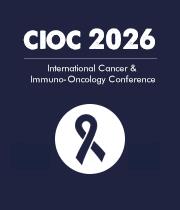Title : Effect of heterosteroids derived from sapogenin in PI3K/AKT/mTOR and apoptosis pathways in breast cancer cells
Abstract:
Introduction: Cancer is one of the leading causes of mortality; breast cancer is the most frequent type worldwide and in Mexico. Therefore, treatment options such as heterosteroids continue to be investigated. To establish their effect on breast cancer, in silico simulation must be performed through molecular docking between heterosteroids derived from sapogenins and potential target proteins, and their effect must be observed in vitro on MDA-MB-231 and MCF-7 cells.
Objective: To analyze through in silico simulation and in vitro experimentation the effect of heterosteroids derived from sapogenins on breast cancer cells.
Materials and methods: A literature search on sapogenins and breast cancer was conducted to identify protein targets. The potential interaction of novel heterosteroids with the identified proteins was estimated using SwissTargetPrediction. Molecular docking was performed with these proteins and heterosteroids, and their effect on the proliferation of MDA-MB-231 and MCF-7 cells was determined.
Results: After the literature review, sapogenins were found to interact with anti-apoptotic, pro-apoptotic, cell cycle, and PI3K/Akt/mTOR pathway proteins. Nineteen potential target proteins were identified for twelve novel heterosteroids derived from sapogenins. Forty-eight molecular docking simulations revealed that PARP1-D9 (-10.29 kcal/mol), caspase 3-D10 (-9.46 kcal/mol), GSK3β-D12 (-9.48 kcal/mol), PI3Kα-D8 (-9.86 kcal/mol), and PI3Kγ-D8 (-9.08 kcal/mol) demonstrated the highest affinity. Eight heterosteroids were tested on cell lines, observing that in MCF-7 the best IC50 was D17 with 3.09 μM and in MDA-MB-231 was D9 with 2.88 μM. In MCF-10A, the compound with the least negative effect on cell growth was D9 at the IC50 for MDA-MB-231.
Conclusion: According to in silico simulation, the best interaction was observed between PARP1 and D9. In MCF-7, the heterosteroid with the best activity was D17, and for MDA-MB-231, it was D9. In MCF-10A, the least toxic heterosteroid was D9.
Keywords: Heterosteroids derived from sapogenins, breast cancer, in silico, in vitro.



